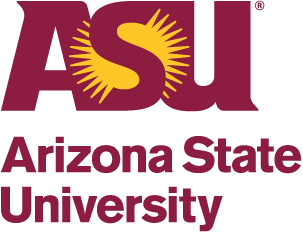ASU’s New Radio Ground Station: Innovation that Reaches for the Stars
The Goal
To create a reliable radio ground station at Arizona State University for use by the School of Earth and Space Exploration. The most immediate use of this station will be to communicate with ASU’s CubeSat Mission Asteroid Origins Satellite. The larger goal is to establish a ground station for future ASU space missions and radio astronomy research.
The Background
Satellites that once cost hundreds of millions of dollars to build and launch are now doable for a tiny fraction of that amount. CubeSats are one such lower-cost platform. It is imperative that ASU as a leading research institute have the independent capability of conducting low-cost, cutting edge scientific research. Critical to doing this is having the in-house capability to transmit and receive data from CubeSats.
Since most of the personnel involved with future ASU space missions are located in the Interdisciplinary Science and Technology Building 4 (ISTB-4), the desired placement of the ground station will be on the roof of that building. If safety or structural concerns should arise, a secondary location would be the roof of the Physical Sciences Center – H wing (PSH), which currently has a partially functional 3-meter parabolic antenna.
The Method
Critical elements to consider will be radio communication regulations, building safety procedures and personnel training. Because of this, the ground station will be built in three phases.
PHASE 1: An omni-directional Rohde & Schwarz HK033 antenna mounted on the roof of the ISTB-4 building will be used to take measurements of currently orbiting CubeSats. This particular antenna has a frequency range of 80 MHz to 2 GHz so it will allow us to receive signals from many of the currently orbiting CubeSats. The main objective of these tests will be to demonstrate the capability of our Software Defined Radio (SDR) to detect signals from CubeSats passing overhead.
PHASE 2: For a minimal cost, the existing 3-meter antenna on the roof of PSH will be retrofitted to track and receive data from currently orbiting CubeSats. Although functional, extensive testing has revealed this antenna should be replaced by a new parabolic antenna because it is 15 years old and is likely to fail in the near future. While testing this antenna we will begin to set up the mission control center on the first floor of ISTB-4.
PHASE 3: We will install a new parabolic antenna on either the roof of ISTB-4 or PSH. This antenna will be 3-meters in size, or larger, depending on wind loading structural requirements and cost. We will write software that allows the antenna to track and receive data from CubeSats and transmit it to the fully operational mission control center on the first floor of ISTB-4. When this new antenna is fully operational we expect to have a data rate of up to 2 Mbps for the AOSAT mission. It will also have a considerable frequency range for future space missions and for use in radio astronomy research.
The Plan
We will complete Phase 1 by the end of May 2014. We will complete Phase 2 by the end of July 2014, which will correspond to the Preliminary Design Review (PDR) for AOSAT. Even though Phase 3 will be running concurrently with Phase 1 and 2, we will complete Phase 3 by the end of October 2014, which will correspond to the Critical Design Review (CDR) for AOSAT.
The Personnel
- Jim Bell (Principal Investigator)
- Erik Asphaug (Science Investigator)
- Srikanth Saripalli (Engineering Investigator)
- Chris Groppi (Science Investigator)
- Viranga Perera (Systems Engineer)
- Hamdi Mani (Radio Engineer)
- Jack Lightholder (Computer Engineer)
- Christopher Skiba (Facilities Manager)

